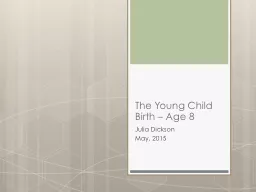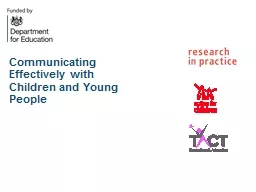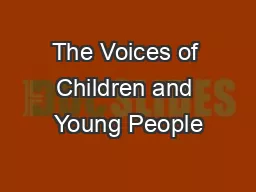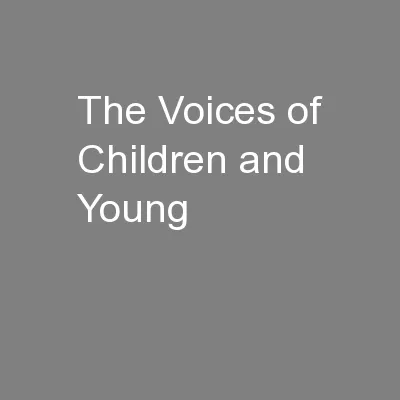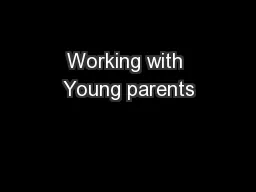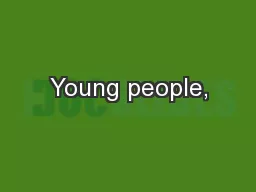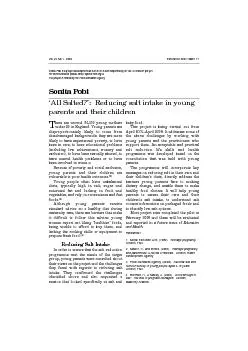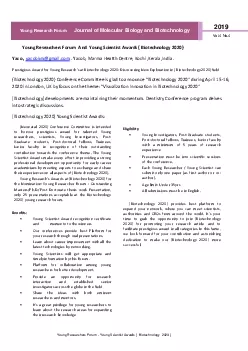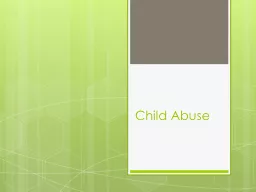PPT-The Young Child
Author : briana-ranney | Published Date : 2016-10-07
Birth Age 8 Julia Dickson May 2015 Dawn Throughout the 20142015 school year I have had the opportunity to learn along side my case study student Dawn Dawn is joyful
Presentation Embed Code
Download Presentation
Download Presentation The PPT/PDF document "The Young Child" is the property of its rightful owner. Permission is granted to download and print the materials on this website for personal, non-commercial use only, and to display it on your personal computer provided you do not modify the materials and that you retain all copyright notices contained in the materials. By downloading content from our website, you accept the terms of this agreement.
The Young Child: Transcript
Birth Age 8 Julia Dickson May 2015 Dawn Throughout the 20142015 school year I have had the opportunity to learn along side my case study student Dawn Dawn is joyful and charismatic girl who is enthusiastic about learning . PROTECTION OF FAMILY’S DIGNITY BY ABANDONING BABIES IN KAZAKHSTAN . 2013 Summer Program on Advances in Social Norms and Social Change of the University of Pennsylvania and UNICEF, July 2013. .. Radoslaw Rzehak. The Importance of Listening to Children. A child's . right to express his or her views . is enshrined in the United . Nations Convention on the Rights of the Child (UNCRC) (Articles 12 and 13) . Need . Anne Tierney and Jane Cook. What do you understand by child sexual exploitation and trafficking?. “Involving children under 18 in exploitative situations, contexts and relationships where young people (or a third party or persons) receive ‘something’ (e.g. food, accommodation, drugs, alcohol, cigarettes, affection, gifts, money) as a result of them performing, and/or another or others performing on them, sexual activities. Child sexual exploitation can occur through the use of technology without the child’s immediate recognition; for example being persuaded to post sexual images on the internet/mobile phones without immediate payment or gain. In all cases, those exploiting the child/young person have power over them by virtue of age, gender, intellect, physical strength and/or economic or other resources. Violence, coercion or intimidation are common, involvement in exploitative relationships being characterised in the main, by the child or young person’s limited availability of choice resulting from their social/economic and/or emotional vulnerability.” . Ravi R. Prasad. Head of Policy and Research. Child Helpline International . Giving a voice to children and young people . Child Helplines around the World. Child Helpline International is a unique, global network of national civil society and government organisations providing counselling, care and protection to children and young people in their countries. . People In Asia Pacific. Ravi R. Prasad. Head of Policy and Research. Child Helpline International . Giving a voice to children and young people . Child Helplines around the World. Child Helpline International is a unique, global network of national civil society and government organisations providing counselling, care and protection to children and young people in their countries. . Sarah Bramwell. Manager, Child Deaths and . C. ritical Reports. Office of the Senior Practitioner . WHAT WE DO?. Office of the Senior Practitioner . Review. Cohort reviews, annual report. Practice reviews, learning forums. sex and the law. 9 November 2016. Dr. Laura Janes. Legal Director, the Howard League for Penal Reform. l. aura.janes. @howardleague.org. . About the Howard League. …. The Howard League for Penal Reform . Our Place Mentoring Services.. Contents. Child Sexual Exploitation (CSE): The issue. . Defining CSE.. Prevalence and Incidence. . Victims and Perpetrators. . Push / Pull Factors. . Identification. . CSE: The Issue.. Interiors. Limited space so: Everything is compact; no space is wasted; Innovative use of space. For the cost-conscious: convertible and multi-use furnishings – recycled items.. Exteriors & “Foundations”. Parenthood. Helena . Mackenzie, PhD, . LP, Mental Health Specialist. Presentation Overview. Discuss transition to parenthood. Explore . unique challenges of young parents and factors associated with better outcomes. La gamme de thé MORPHEE vise toute générations recherchant le sommeil paisible tant désiré et non procuré par tout types de médicaments. Essentiellement composé de feuille de morphine, ce thé vous assurera d’un rétablissement digne d’un voyage sur . Vol.26 No.1, 2008 Sonita Pobi‘All Salted?’: Reducing salt intake in youngparents and t 2019 Vol4 No4 Young Research Forum Journal of Molecular Biology and Biotechnology Yaco yacobkmgmailcom Yacob Marma Heatth Centre Kochi KeralaIndia WPzvPZZZvoP- Discovering New Explora Child abuse happens in all cultural, ethnic, and income groups. . Child . abuse can be . physical. , emotional/verbal, sexual or through neglect. . Abuse . may cause serious injury to . the . child and may even result in death. .
Download Document
Here is the link to download the presentation.
"The Young Child"The content belongs to its owner. You may download and print it for personal use, without modification, and keep all copyright notices. By downloading, you agree to these terms.
Related Documents

